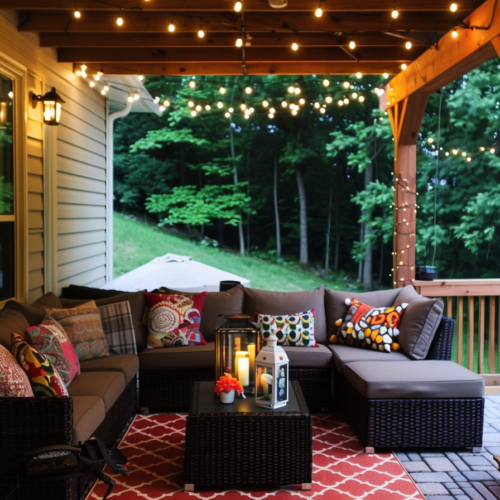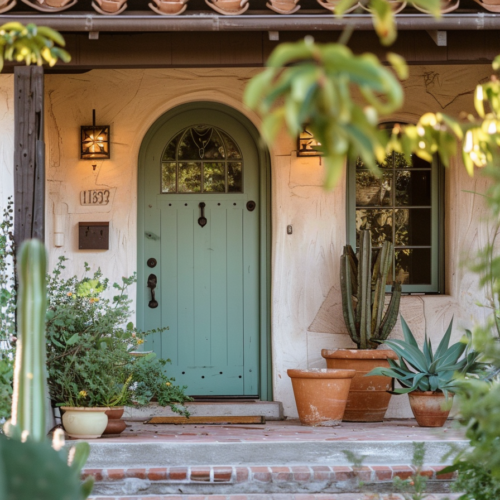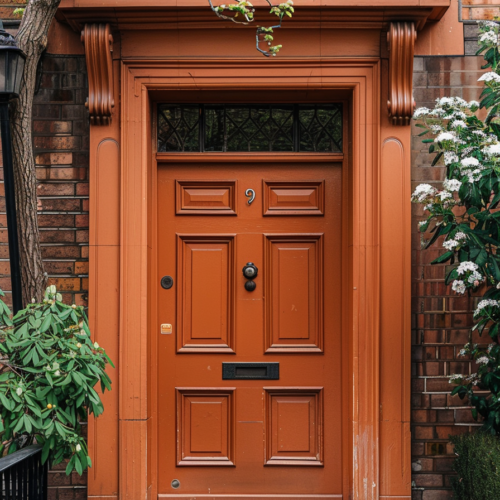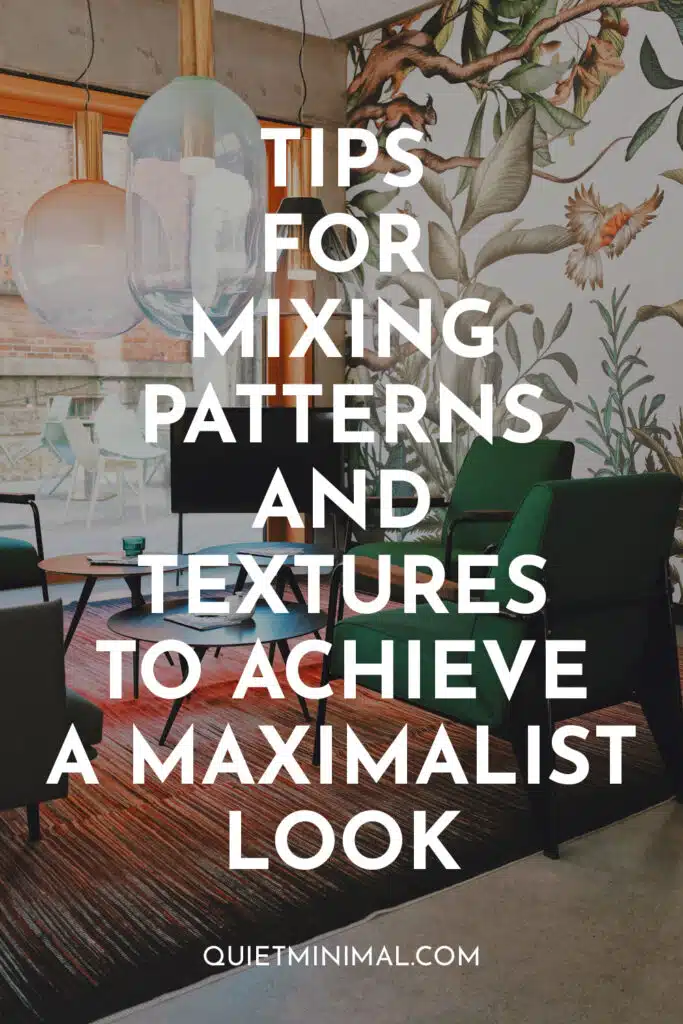
Are you tired of your minimalistic home décor and looking for a way to add some pizzazz? A maximalist look is a perfect way to make your space stand out!
Mixing patterns and textures is an easy way to achieve this style, but it can be challenging to do correctly. In this article, we’ll offer tips on how to mix patterns and textures to create a maximalist look you’ll love.
Do you want your living room to have a unique style that reflects your personality? Or could your bedroom use something special that will make it feel cozy and inviting? If so, then a maximalist look is the way to go!
But with so many options available, it can be hard to know where to start.
Don’t worry—we’re here to help! In this article, we’ll give you tips on how to mix patterns and textures to achieve the perfect maximalist look for your home.
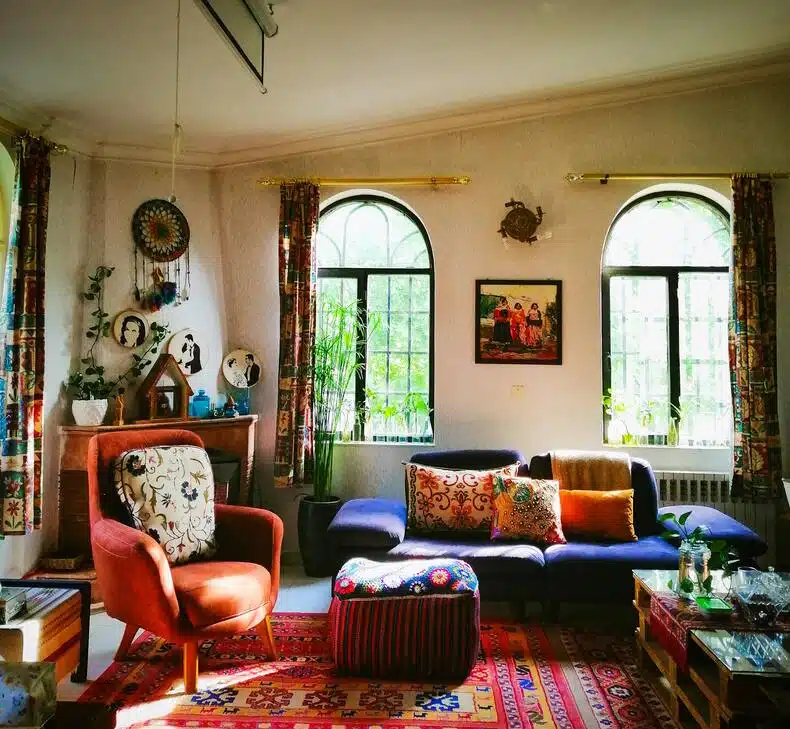
So if you’re ready for a space filled with fun patterns, warm colors, and cozy textures, then keep reading!
Definition Of Maximalism
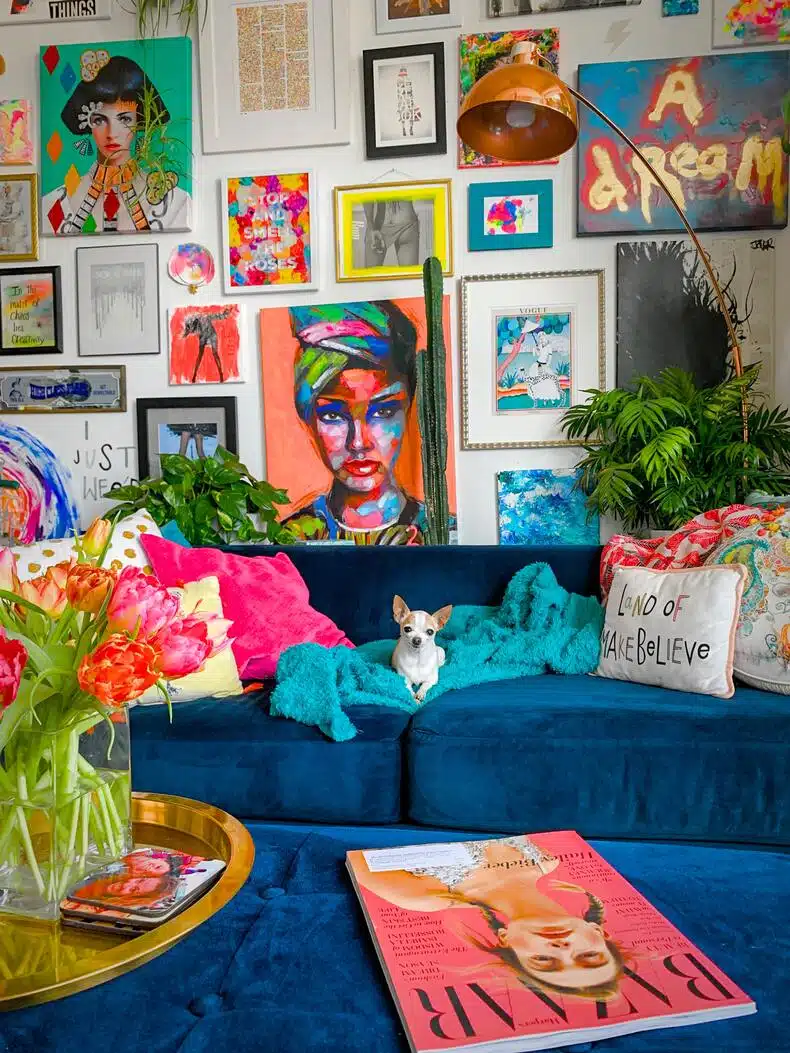
Maximalism is a decor style that celebrates boldness, depth, and extravagance. It’s an exuberant way of decorating that creates an incredible aesthetic and invokes a feeling of joy.
Maximalist decor uses a mix of patterns, textures, shapes and colors to create a bold style. The result is an adventurous style that captures the eye with its vibrant feel.
At its core, maximalism is about making a statement with your decor choices. The objective is to identify the flawless harmony of components that unite to form something magnificent.
Every element should be chosen carefully and strategically to achieve a pleasing outcome.
Regarding maximalism, it’s important to remember that less is not more. This style thrives on excess and embraces the idea of creating an atmosphere of abundance.
When executing this design concept, don’t be afraid to use many pieces or even contrasting items to make a powerful statement.
Maximalism can be seen in many aspects of life, including interior design, fashion, art, organization and travel. Maximalism is defined by your own unique sense of style and creativity. The key is finding what works for you!
With the right mix of patterns and textures, you can achieve an unforgettable maximalist look for any room or occasion.
Color Theory Basics
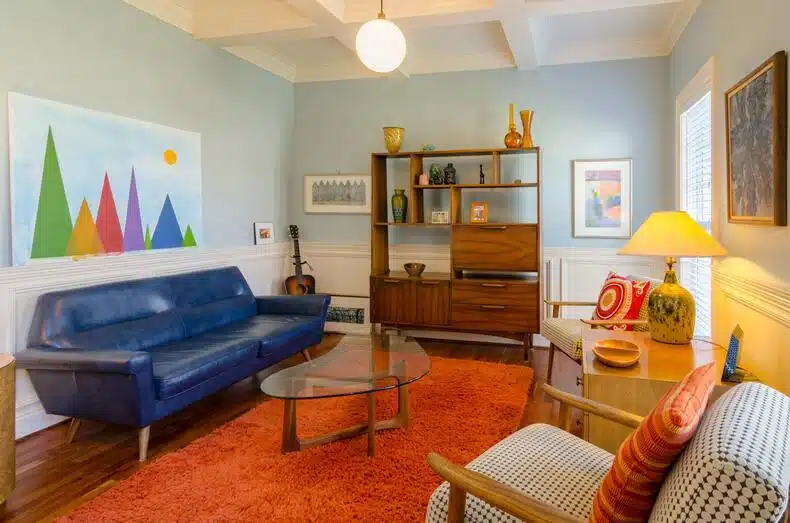
Ah, color theory. The bane of a maximalist’s existence. We all know the basics; you can’t go wrong with black and white, but when it comes to mixing patterns and textures, there’s more to it than meets the eye. Fear not, for I’m here to help you navigate this tricky fashion landscape.
Let’s start with the color wheel. Understand colors to get a stylish maximalist look. Colors situated across from one another on the color wheel are complementary. They create contrast and stand out when paired. Colors next to each other are analogous. They go together without clashing or overpowering.
Color psychology is also important in achieving a successful maximalist ensemble. Warm colors like reds and oranges create energy and excitement while cooler tones like blues and greens are calming and serene.
Combine warm and cool tones to create a unique pattern and texture combination. Use color temperature to your advantage.
When putting together a look, consider the event. Bright neons are great for pool parties and festivals, but not for work or formal occasions. Every situation has different requirements, so pick your outfit according to the event. You’ll look confident and stylish, without being too flashy.
Mixing patterns and textures doesn’t have to be complicated. Color theory is the key: wheel placement, combinations, contrast, psychology, and temperature. It’s easy! Good luck with your fashionable endeavors!
Combining Patterns And Textures
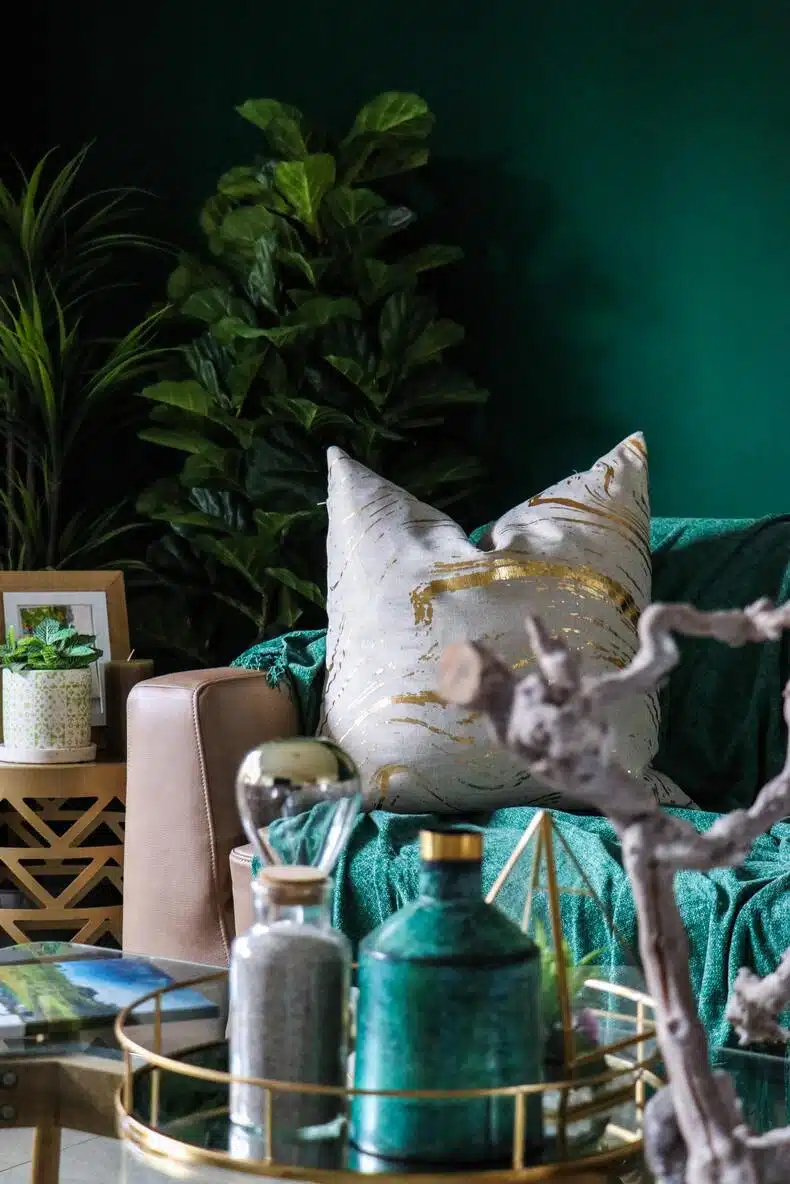
Creating a maximalist look requires combining patterns and textures. To achieve this, start by choosing a color scheme. You can use bright colors for a bold, vibrant look or muted tones for an elegant style.
Once you have your palette sorted, start mixing patterns. Geometric shapes are the perfect way to add visual interest and create a unique look. Try pairing stripes with florals, or polka dots with gingham for contrast. When mixing patterns, make sure to keep your colors consistent throughout the space.
Textures are also crucial when creating a maximalist look. Layer different textures such as velvet, fur, and metal to add depth and contrast to the overall design. Combine velvet upholstery with metal accents, or mix furry rugs and throws with distressed wood furniture.
Combine different patterns and textures to make a room full of personality and charm. With careful consideration of color schemes and layers of texture, you can easily achieve the maximalist look you desire.
Rules For Selecting Textiles
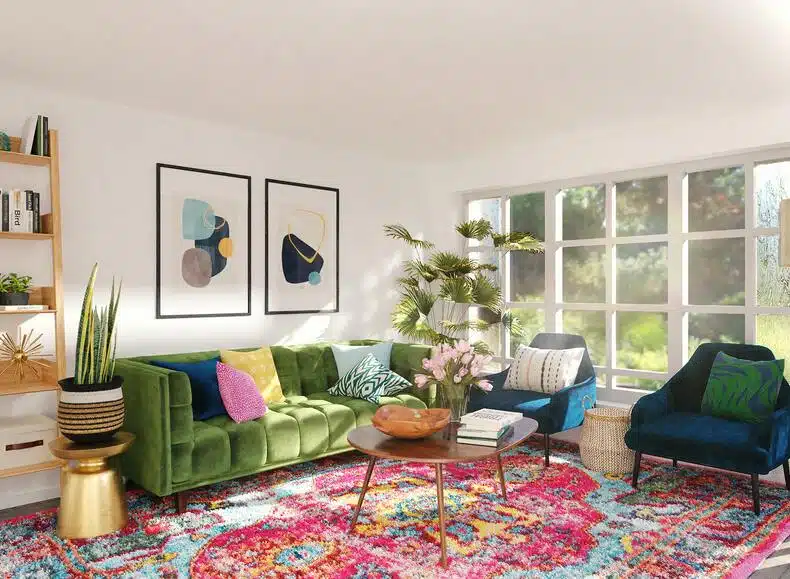
When it comes to achieving a maximalist look, the selection of appropriate textiles is key. Using different textures and patterns in combination with each other can help create an interesting space. It’s important to consider the size of the room when selecting textiles as it will affect how much you need.
When picking fabric, choose fabrics that go together but that look different. If possible, opt for fabrics that are made from natural materials such as cotton or silk as they add warmth and texture to a room. Pillows are another great way to add texture and pattern to a space.
When choosing a pillow, look for one with a bold pattern or color that can be used as an accent piece.
Rugs are essential for creating an inviting atmosphere and adding warmth and texture to the room. Look for rugs made from natural fibers such as wool or jute as these will be more durable than synthetic ones.
When choosing curtains, opt for heavier fabrics that can block out light but still let in some natural light.
For a maximalist look, combine colors, patterns, and textures in your space. Be thoughtful when selecting pieces so they don’t clash. In no time, you’ll have an interesting and balanced room!
Mixing Prints And Solids
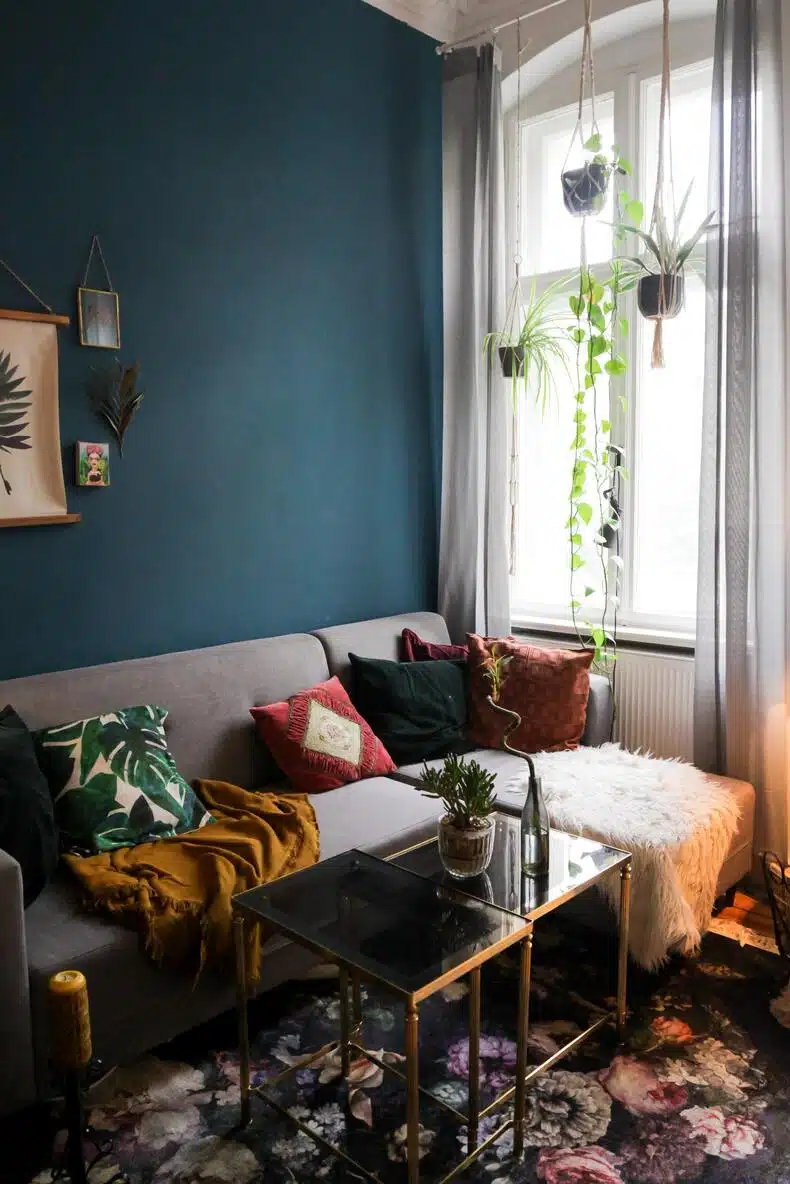
It’s all about mixing prints and solids to achieve a maximalist look. There are no rules in maximalism, so why limit yourself? It’s possible to create an eye-catching design by combining different colors, patterns, and textures.
Here are a few tips for achieving a maximalist aesthetic:
1. Mixing prints like stripes, florals, and geometric shapes make bold patterns.
2. Create subtle contrast and depth by layering solids and textures with various shades of the same color family.
3. Balance visual interest in the space by using design rules like scale and proportion.
The possibilities when mixing prints and solids for maximalism are endless! Have fun experimenting with different colors, patterns and textures to create your own unique look. Don’t be afraid to add bold pieces that make a statement – after all, that’s what maximalism is all about!
Accessorizing With Patterns
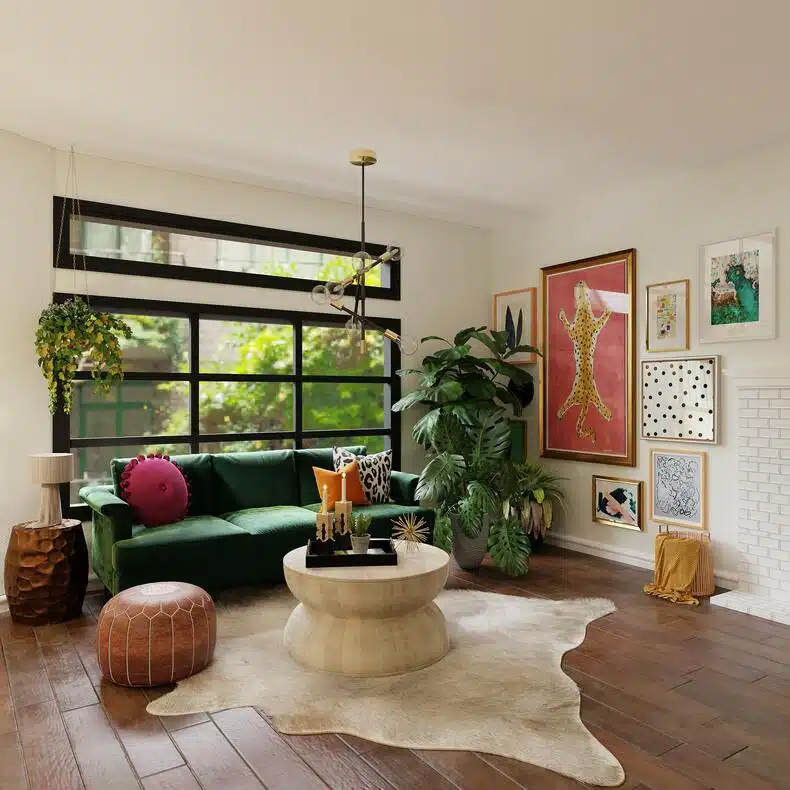
Once you’ve mastered the art of mixing prints and solids, it’s time to move on to accessorizing with patterns. To achieve a maximalist look, start by layering patterned accessories in different sizes and shapes.
Mix large floral pillows with small floral blankets for a floral theme. Or opt for a variety of patterned rugs and wall hangings for an eye-catching look.
Maximalism accents don’t always have to be bold; try draping your furniture or bedding in light pastels or muted hues for a more subdued vibe. Don’t forget to mix texture as well; pair velvet cushions with woven throws or shaggy area rugs.
Create a cozy atmosphere by layering different textures in the same color. Try putting faux fur pillows, cable knit throws and fluffy rugs in the same room.
When it comes to patterned decor, don’t be afraid to experiment! Geometric designs can easily be added to your space with window treatments, wall art, or lighting fixtures.
Add tribal patterns to your decor! Brighten up your space with tribal-patterned fabrics! Add table runners, curtains, armchairs, and ottomans with tribal designs to give your home an exotic flair.
When adding patterns to your space, be sure to maintain balance. Too much of one pattern can make it look cluttered. Using designs to accessorize can make your home look more interesting and still keep its unique style.
Layering Different Textures
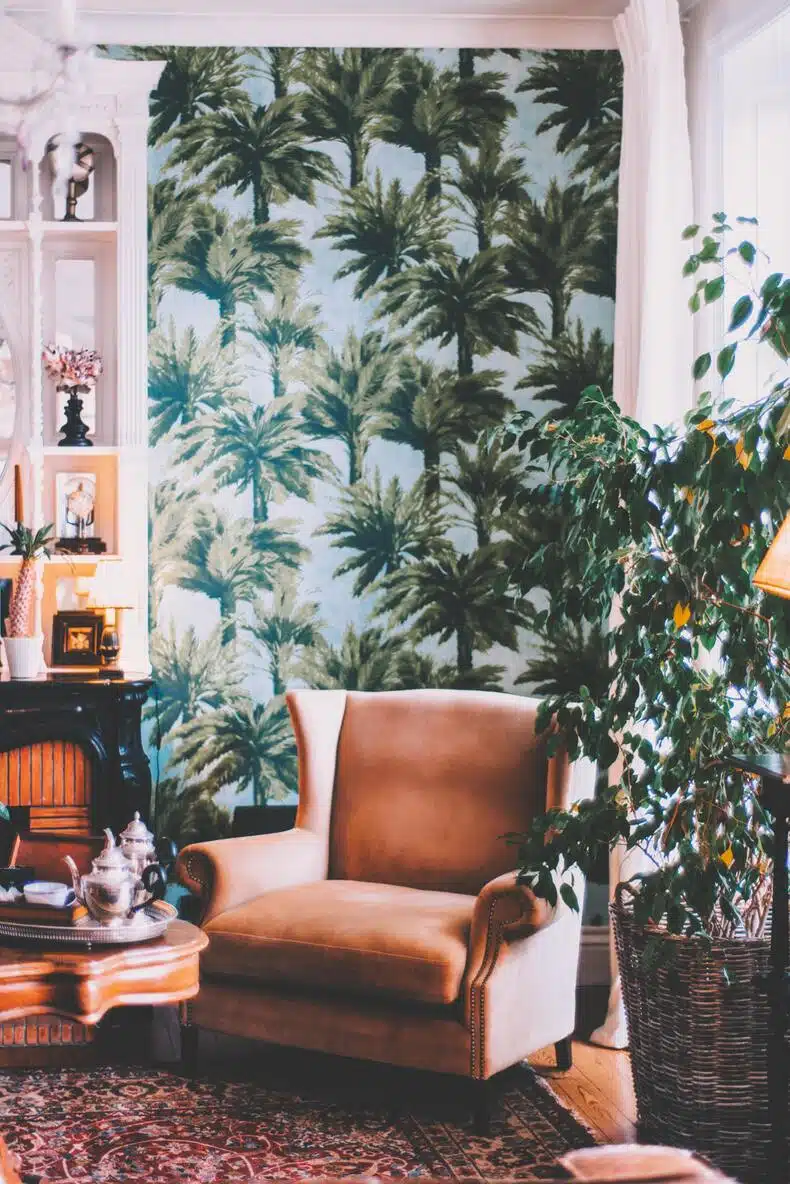
The key to creating a maximalist look is to layer different textures. Texture can be used to create interesting combinations. Patterns can be mixed together and multiple textures can be layered.
Adding the right pieces can make even a simple, monochromatic look more interesting.
A great way to start building with texture is to pick out materials that are different from one another. Contrasting textures bring interest and dimensionality to a space.
For example, add a rough and rugged natural fiber rug to a sleek leather sofa for an interesting juxtaposition of textures. You could also layer luxe velvet pillows onto a cotton throw for cozy comfort in your living room.
Textural layers don’t have to be limited to furniture either – you can use fabrics, wall treatments, or artwork to make your look feel more dynamic. Add depth with patterned wallpaper or hang up some statement art pieces with bold colors and intricate designs.
Mix metals such as brass, copper, and stainless steel in light fixtures, door handles, and other decorative accents for a stunning look!
Texture plays a key role in any interior design project, but it’s especially important for maximalist style. To achieve a unique look, mix different patterns, fabrics and finishes. You’ll get a stylish, one-of-a-kind look.
Adding Contrast To A Room Design
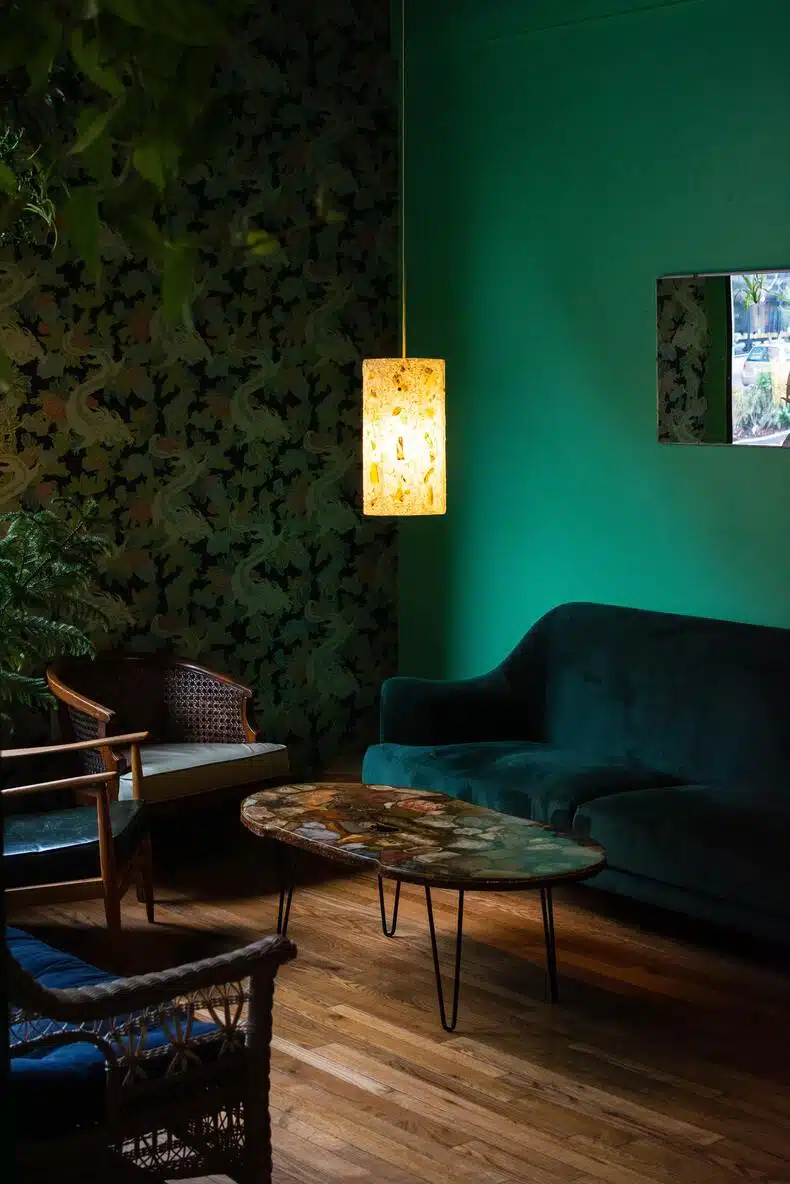
Adding contrasting prints and colorful metallics to the space is a key ingredient for achieving a maximalist look. This can be done through using bold geometric patterns on furniture pieces, rugs, and wall accents.
In order to create visual texture in the room, layer different textures like velvet, fur, or leather. Metallics such as copper or rose gold can be used to add an elegant touch without overwhelming the other colors and patterns in the room.
Lighting plays a key role in creating a maximalist look. For a dramatic effect, try star- or moon-shaped light fixtures. For a softer look, install string lights along a wall or ceiling.
Chandeliers are also great for a luxurious touch, and come in many shapes and sizes.
When designing a room, it’s important to create contrast while keeping balance. Don’t add too much of any one element, as this can overpower other items. Mix colors and textures together so nothing looks too one-dimensional.
Use multiple hues in the same color family for continuity. Also, combine different scales of patterned fabrics to create depth and dimension.
Don’t forget to accessorize! Add throw pillows, bookshelves with your favorite items, artwork that reflects your personality. And sculptures that show your favorite materials or themes.
These small details create an eye-catching and balanced look that will wow guests when they come to your home.
Incorporating Metallics And Mirrors
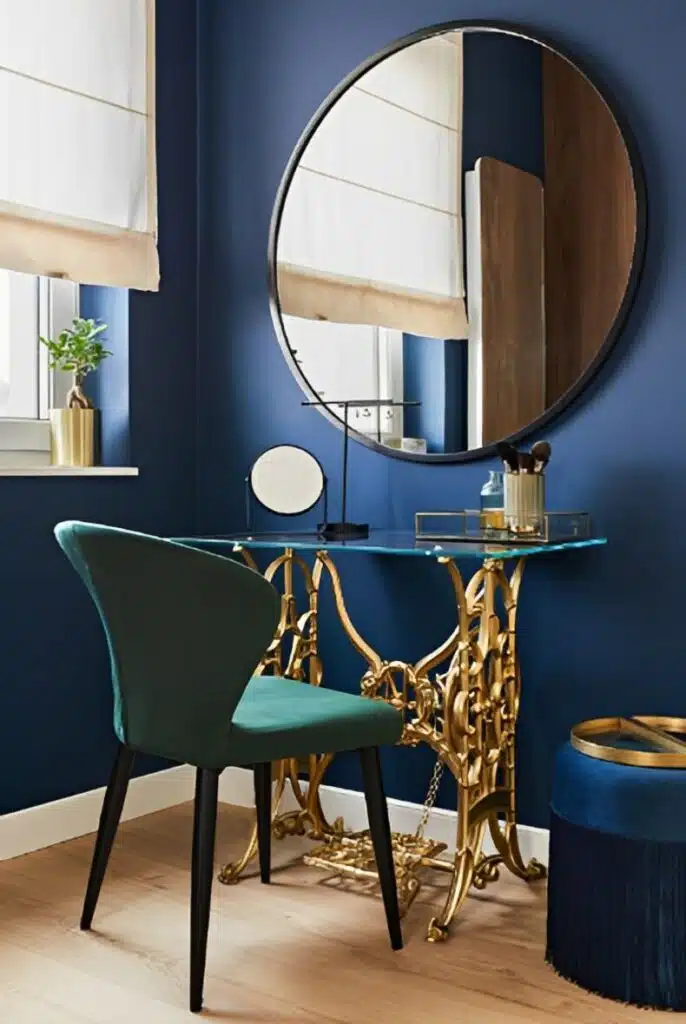
Metallic accents and mirror accents are essential for achieving a maximalist look. Metallic textures and mirror textures will add visual interest to any room. When incorporating metallics, there are some key points to keep in mind:
– Choose an accent metal color that complements the other colors in the room
– Incorporate metallic furniture with texture
– Add metallic or mirror accessories for a touch of sparkle
– Contrast different types of metals for added dimension
– Use mirrors strategically to create the illusion of space
When planning how to incorporate metallics into your design, think about combining the elements of texture and color. Consider mixing metals with other materials like wood and fabrics to create a unique style.
Mirrors can be used as an accent piece or used in multiples to create an interesting focal point on walls or tabletops. Designers can use vintage mirrors with fancy frames to make a luxurious atmosphere.
Metallics and mirrors can be used to get a fantastic maximalist look that everyone will admire.
Making Neutral Rooms Pop
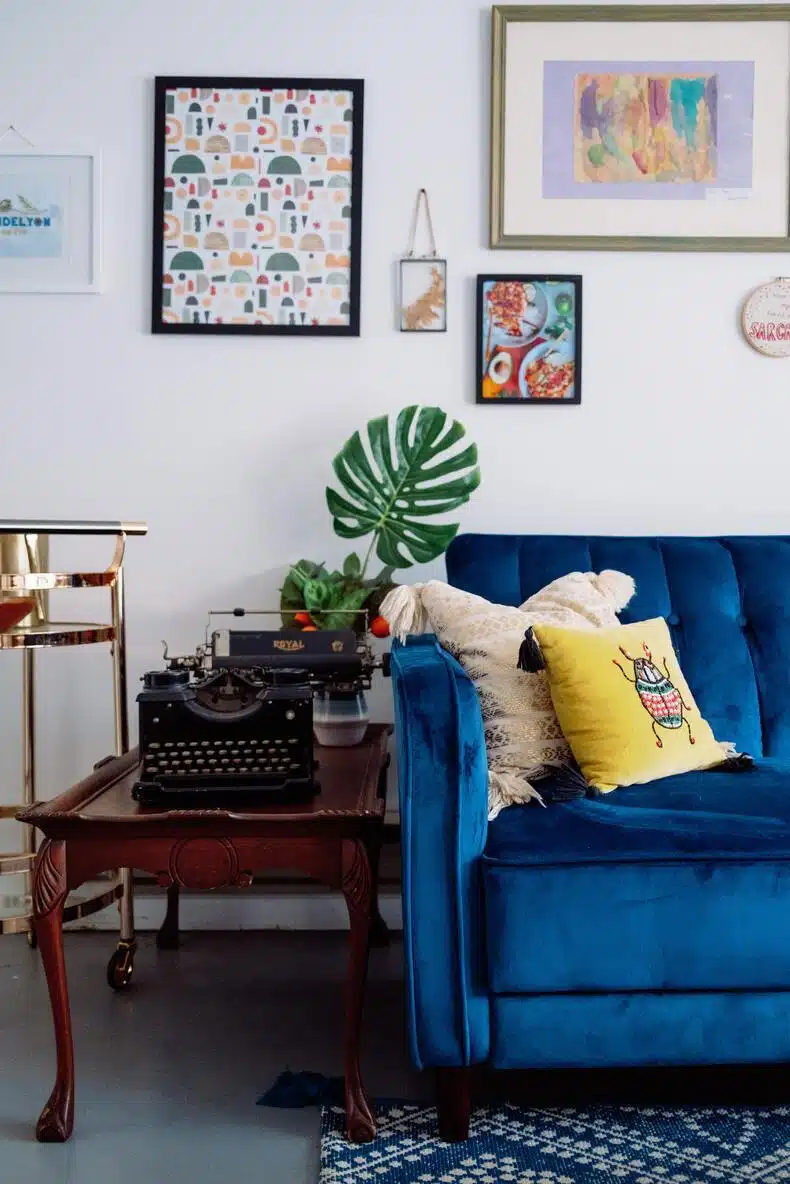
To make neutral rooms pop, start with a base of solids. Use rich tones for walls and furniture to create a design balance that reflects your personal style.
Introduce patterns and textures with rugs and pillows in bold prints and fabrics. To add depth, incorporate metallic accents like picture frames, vases, or lamps.
Then, layer on color by adding pops of hues with artwork, throws, and flowers. Pick an item that goes with the current color scheme, or add something contrasting that still fits with the room’s atmosphere.
Look for pieces with interesting shapes and details to add texture to the room.
Add houseplants and wooden accents to your room to make it more inviting. To make it stand out, choose a unique light fixture to surprise people. It’ll give the room a decorative atmosphere.
Adding design elements to neutral rooms can liven them up and make them stand out. A few pieces of furniture, artwork, or accessories can transform a space and make it unique, showing off your taste and style. Plus, it’ll be a welcoming place to be.
Tips For Blending Colors
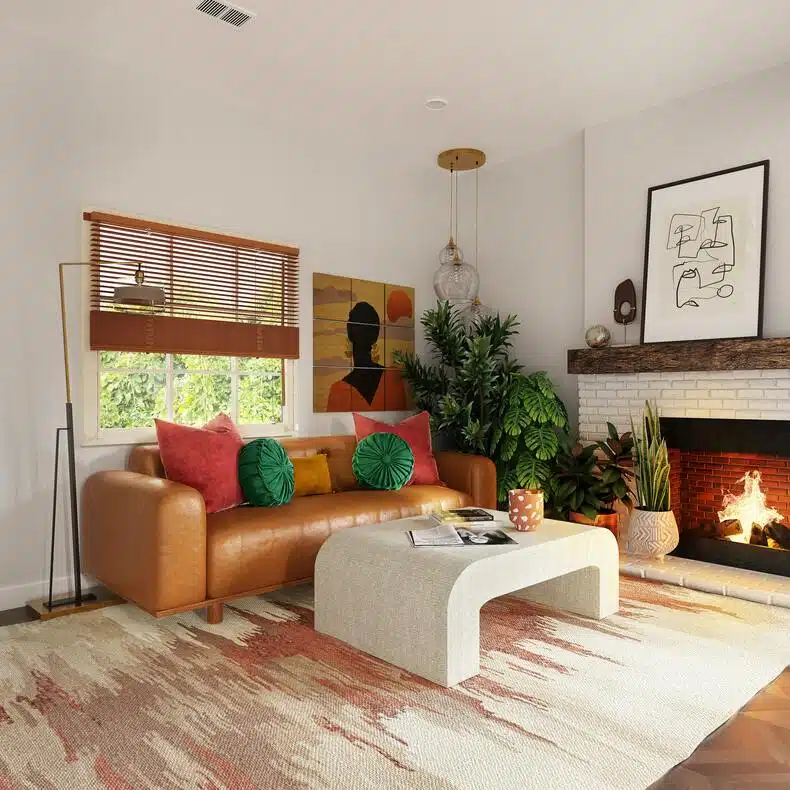
When it comes to maximalist interior design, blending colors is essential. To ensure a successful mix of patterns and textures, take advantage of color blending techniques to create a unified look. Here are some ideas and tricks to help you get started:
- Mix up your hues. Create contrast in the space by mixing up different shades and tints of the same hue. This will keep the overall look interesting while still providing cohesion. For example, try pairing deep navy blues with light teals and turquoises for a dynamic look.
- Incorporate analogous colors. Analogous colors are those that sit side by side on the color wheel. This technique creates harmony in the room, allowing you to play with similar yet contrasting tones. Consider using shades of oranges and reds together for an energetic aesthetic or combine blues and greens for an earthy feel.
- Opt for shades that are contrasting on the color wheel. This will bring equilibrium to the space. To make sure the colors don’t overpower one another, keep their saturation levels similar.
By following these color mixing tips, you can craft unique combinations that will make your space stand out! You can create a beautiful, maximalist look by following a few simple rules.
Understand how hues work together, choose analogous tones, and select complementary shades. These will help you create a palette that reflects your personal style.
Breaking Traditional Design Rules
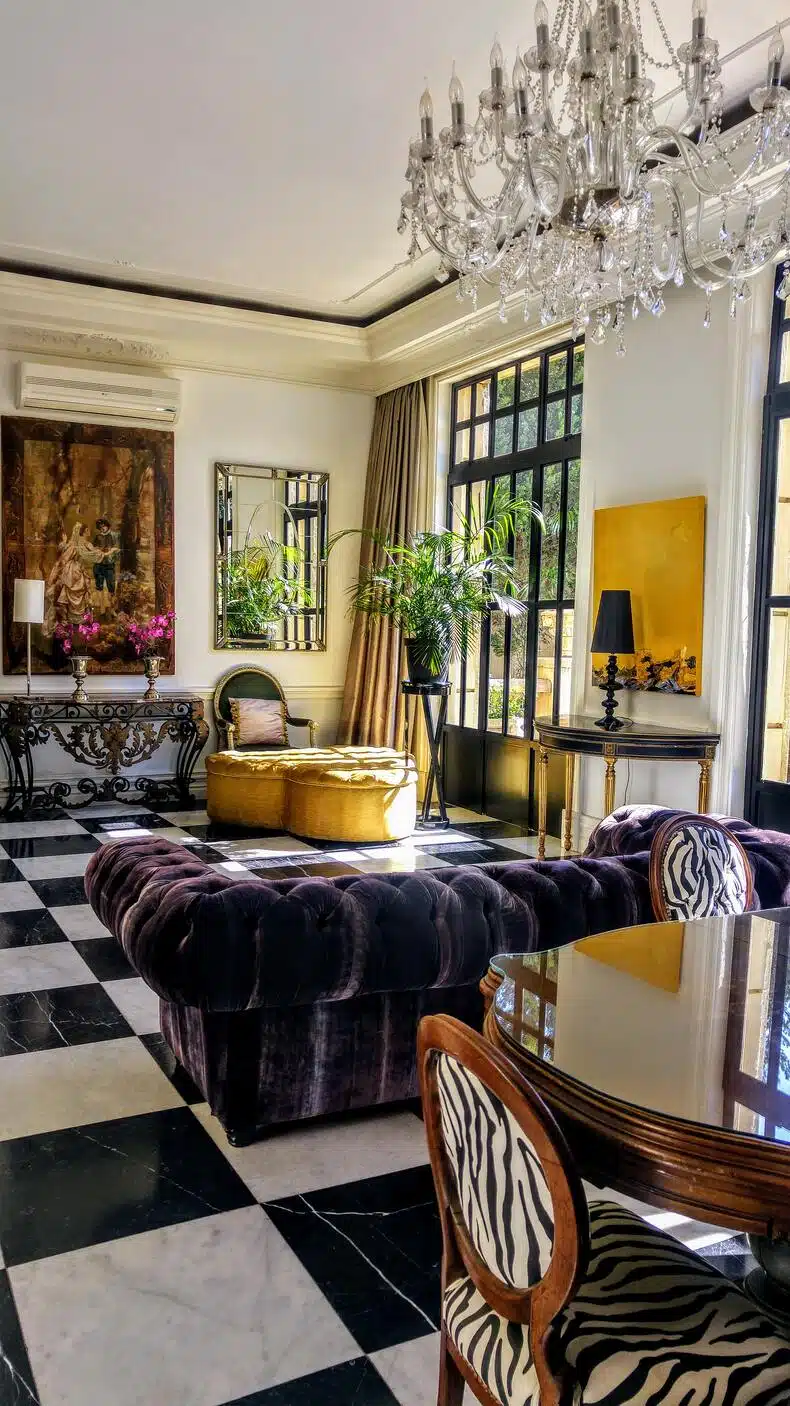
Having discussed the basics of color blending, let’s explore how to break traditional design rules and make a statement. Incorporating eye-catching accents and accessories can add a personal touch to your space. Mixing up design conventions is easy!
Try pairing an Oriental-style rug with plaid wallpaper or a velvet sofa with an animal skin print. Have fun exploring new design trends and make something special!
When it comes to textiles, don’t be afraid to try different combinations. For example, pair silks and linens, leathers and cottons, or even faux fur and velvet for a truly transgressive style. Colors can also be blended in unexpected ways.
Why not try contrasting shades or complementary hues? You could also add some interest by playing with different textures such as faux suede, woolen fabrics, or even sequins for a touch of sparkle!
Find unity between pieces by looking for common colors or shapes. Think creatively by hanging artwork on walls or furniture for a unique look. This will add texture and depth to your decorating.
Experiment with various mixtures until something resonates with you. It may take time but the end result will be worth it! So get creative and have fun while making your home reflect your own unique style!
Building A Harmonious Palette
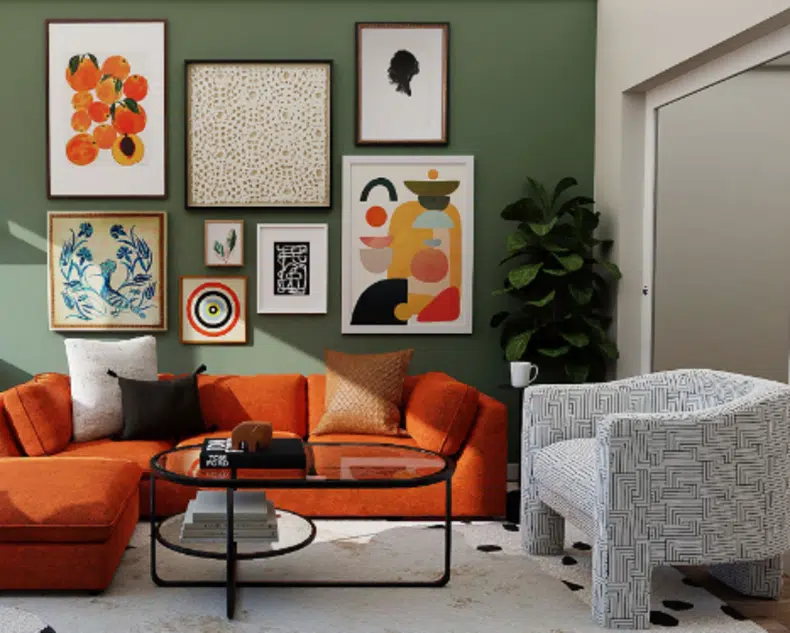
Creating a harmonious palette is essential when mixing patterns and textures. While maximalism embraces an eclectic approach to design, it doesn’t mean you should throw caution to the wind.
You need to create a cohesive color palette that will bring all the elements together in your space.
Choose a base color. This can be a main color from a pattern or texture you want to use, or a neutral tone to tie everything together. Shades of blue and green work well as neutrals, while shades of pink and yellow offer bolder options.
Once you’ve established this base, build upon it by adding in complementary colors that are harmonious with each other. Try different combinations until you find the perfect balance!
The key to making sure your color palette looks intentional is to repeat hues throughout your space. Incorporate accent colors in multiple places for a cohesive look.
To unify different patterns and textures, use similar colors or repeat the same print in the room. This will help create a harmonious design without feeling overwhelming.
Mixing patterns and textures can be tricky at first, but you can create a beautiful maximalist look with practice and patience. Consider colors and where to place prints and fabrics to get a nice result, even if you don’t usually go for the maximalist look.
Adding Artwork To The Design
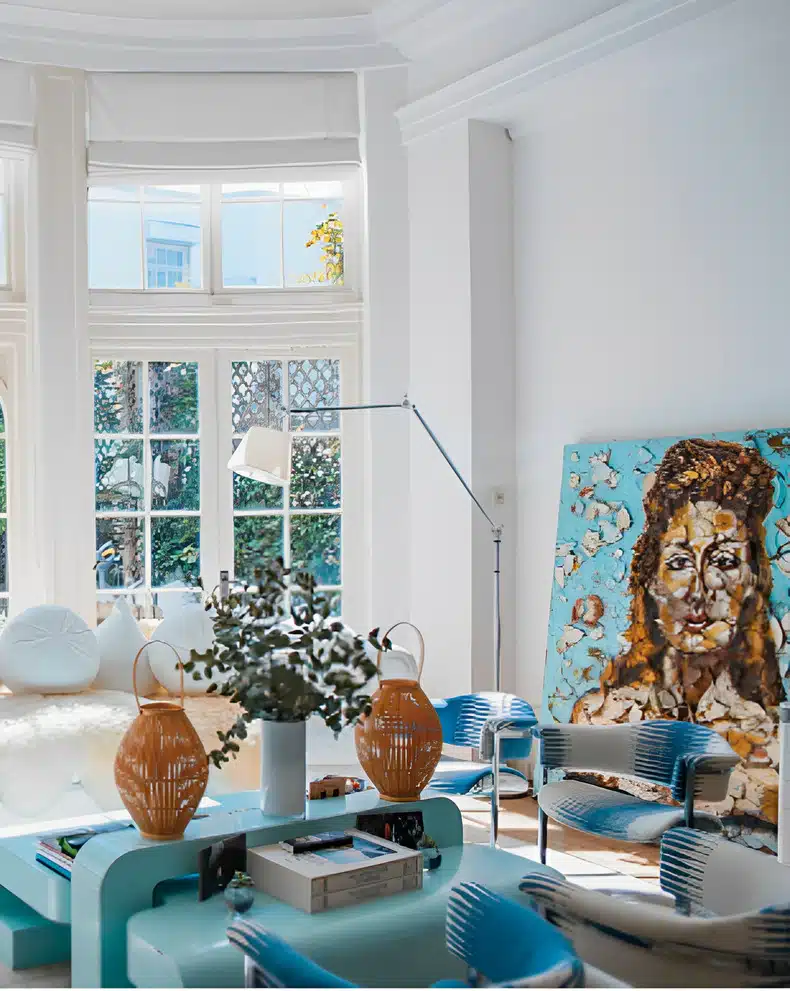
When selecting artwork, go bold with pieces that will stand out and blend in with the other elements of your decor. This can include finding artwork that incorporates some of the colors or patterns in your design scheme.
But don’t be afraid to experiment – art should be reflective of your personality!
Adding framed artwork is an excellent way to create visual interest when it comes to wall decor ideas. Consider varying sizes and shapes when hanging artwork for maximum impact.
You can make your room look extra special by adding sculptures or vases. You can also hang a mirror on one of the walls for added depth and dimension. These artwork accessories will take your room from average to extraordinary.
For those who prefer minimalism, select fewer statement pieces instead of overcrowding a wall with too many artworks. Be sure to keep the look balanced by having a little bit of everything – from simple prints to abstract paintings or even photographs.
When selecting art for your space, pick something different that will enliven the room. Think about color and texture to make a lively atmosphere that will leave an impact on visitors.
Creating Balance In A Room
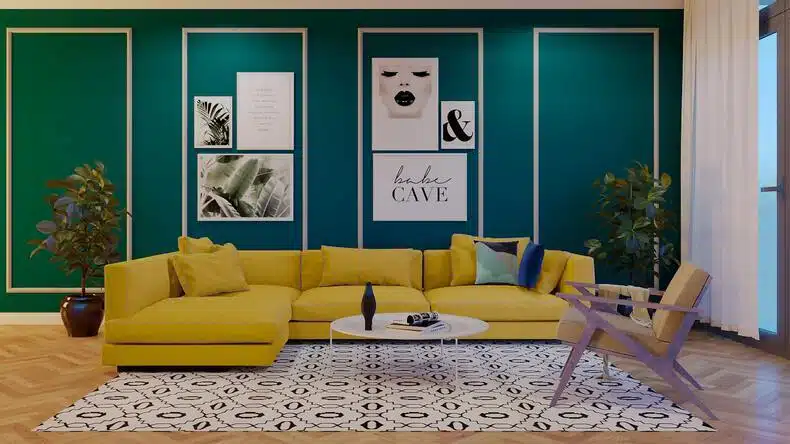
Achieving a maximalist look doesn’t mean throwing all the patterns and textures you can find into a room. Balance is the key to creating a successful design. To create balance in the room, pay attention to color, texture, and pattern.
Color
Balance out warm and cool colors in the room by using both neutrals and saturated hues.
Texture
Use different materials such as wood, metal, glass, stone, and fabric to create contrast and depth.
Pattern
Play with scale by using large prints along with small ones or mix stripes with florals for an interesting look.
In addition to color balance, texture balance is also important when it comes to creating a maximalist look. Mixing hard materials such as tile or stone with soft fabrics like velvet or leather can give a space an interesting visual look.
You can combine printed wallpaper with smooth-painted walls or glossy finishes with matte ones.
To achieve pattern balance in your room design, it’s best to start with one pattern as your base or main focus then layer other patterns on top of that one. You can also try combining a bold print with more muted ones for a subtle yet impactful look.
Try experimenting with different shapes and sizes of patterns. This will create an eclectic style which is great for maximalism.
To create a maximalist look in a room, use color, texture, and pattern. Balance is important to keep the look from feeling overwhelming. With careful planning, you can make a unique and attractive interior.
Conclusion
The art of maximalism is a great way to express one’s personality and creativity. With an understanding of color theory, texture, and pattern selection, a maximalist look can be achieved with ease.
To create a striking space, break the traditional design rules and mix prints and solids. Balance is key – use artwork to enhance the textures and patterns.
Experienced or not, you can create a fantastic maximalist look by combining patterns and textures. With these tips, you’ll be able to create a stunning interior that brings joy and personality into your home.
Follow Quiet Minimal on Pinterest for more interior design and minimalist tips!
